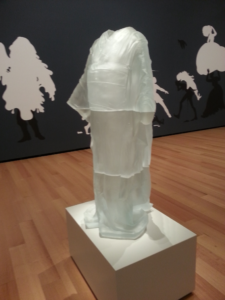Effects of Electrical Transcutaneous Vagus Nerve Stimulation on the Perceived Intensity of Repetitive Painful Heat Stimuli: A Blinded Placebo- and Sham-Controlled Randomized Crossover Investigation.
Kristen Sparrow • January 15, 2020


This article by a similar group makes a somewhat startling conclusion, but one which I had noticed in the clinic and thought it was spurious.
Only in male participants, TVNS was superior to sham and placebo conditions in the reduction of heat pain before the onset of TSP.
Effects of Electrical Transcutaneous Vagus Nerve Stimulation on the Perceived Intensity of Repetitive Painful Heat Stimuli: A Blinded Placebo- and Sham-Controlled Randomized Crossover Investigation.
Abstract
BACKGROUND:
Transcutaneous vagus nerve stimulation (TVNS) is a promising treatment for acute and chronic pain. However, experimental studies yielded controversial results. We examined if TVNS reduces the perceived intensity of repetitive painful heat stimulation and temporal summation of pain (TSP) in healthy volunteers in comparison with placebo and sham stimulation, as well as no intervention.
METHODS:
In 4 sessions, 90 heat pulse stimuli at individual pain tolerance temperature were applied to the ventral forearm of 49 healthy volunteers (25 women) using a Contact Heat Evoked Potential Stimulator thermode (Medoc, Ramat Yishai, Israel). Pain intensity was assessed with verbal ratings on a numeric pain scale (0-100) at every tenth heat pulse. After the first session in which pain intensities without intervention were evaluated, participants completed 3 sessions in a single-blinded randomized crossover manner: (1) sham stimulation applied at the earlobes, (2) placebo stimulation (inactive device), or (3) TVNS applied at the cymbas conchae. Primary data were analyzed using analysis of variance for repeated measures and t test for paired samples.
RESULTS:
Pain intensity decreased during all interventions as compared to no intervention (ηp = 0.22, P < .001; mean difference TVNS versus no intervention 9.5; 95% confidence interval [CI], 3.6-15.4; P < .001). Hypoalgesic effect of TVNS was better than that of placebo and sham in men before the onset of TSP (mean differences for TVNS versus placebo 6.2; 95% CI, 0.2-12.1; TVNS versus sham 6.2; 95% CI, 0.2-12.1; P < .05). In women, TSP response under TVNS was decreased if compared to no intervention (median difference, 7.5; 95% CI, 3.5-15.0; P = .003).
CONCLUSIONS:
TVNS, placebo, and sham stimulation exerted comparable effects under experimental heat pain stimulation. Only in male participants, TVNS was superior to sham and placebo conditions in the reduction of heat pain before the onset of TSP.

